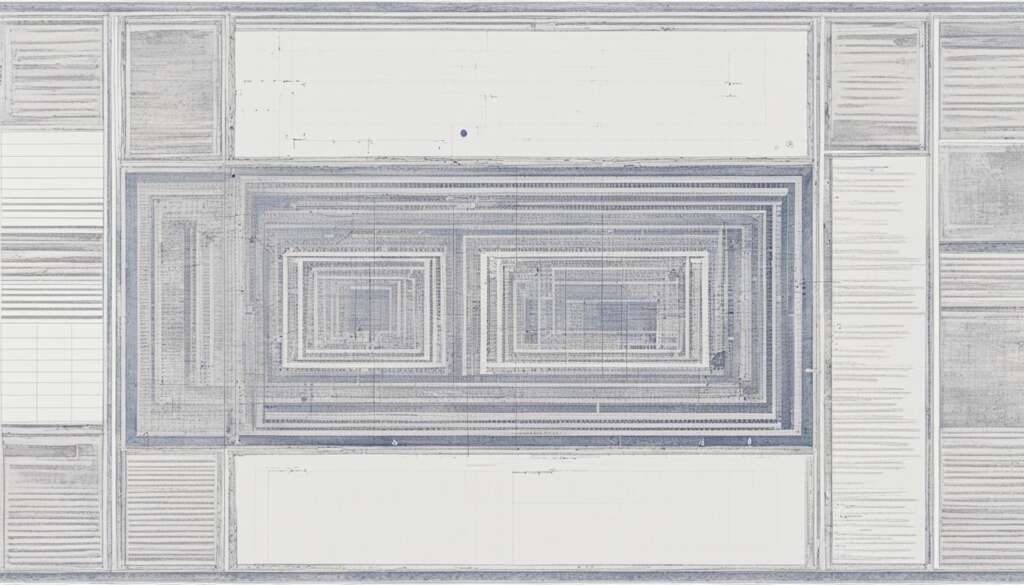Table of Contents
If you’re involved in any professional field, you’ve likely heard the term “template” before. But what exactly is a template, and how can it benefit your work processes? In this guide, we’ll explore the definition and purpose of templates, including their importance in various industries.
Simply put, a template is a pre-designed format that provides a structure for various documents or processes. Templates can offer consistent branding, improve efficiency, and eliminate errors by providing a standardized framework. They can be used in a variety of settings, from website design to project management to marketing campaigns.
So why are templates such an integral part of modern work processes? In the following sections, we’ll dive deeper into the functionality of templates and explore their various applications.
Key Takeaways
- A template provides a pre-designed structure for various documents or processes.
- Templates can offer consistent branding, improve efficiency, and eliminate errors.
- They can be used in various industries, from website design to project management to marketing campaigns.
- Templates offer a standardized framework that can save time and boost productivity.
- By embracing templates, you can enhance the creative aspects of your work by freeing up more time to focus on them.
Exploring the Definition and Functionality of Templates
Templates provide a predefined structure, formatting, and design elements to create consistent and professional-looking documents, making them essential to streamline your work processes. By providing consistency, templates help save time and enhance productivity in various fields.
Structure: Templates create a predetermined layout to organize content systematically. Whether it’s for a resume, report, or presentation, templates provide a guideline that ensures logical flow, readability, and ease of comprehension. With all the essential information in place, templates help to convey the intended message effectively and increase the chances of the materials being well-received.
Formatting: Templates define font styles, sizes, and colors along with alignments and spacing rules. They help maintain a uniform appearance across documents, ensuring readability through enhanced visual appeal. Instead of spending time on tedious formatting, designers and writers can devote their attention to creating efficiently and effectively, streamlining work processes in the creative industry.
Design elements: Professional-looking visuals play an essential part in creating a good impression. Templates help provide imagery, graphics, logos, and other design components to project a brand’s consistency and credibility. Templates can be adjusted to adhere to a brand’s guidelines, ensuring that the materials’ look and feel remain consistent, regardless of who creates them.
Moreover, templates enable individuals and businesses to maintain consistency in their documents and communications, regardless of the number of people involved. Consistency in branding, layouts, and contents projects professionalism and reliability, boosting the document or organization’s credibility. By streamlining, enhancing productivity, and providing consistency, templates are an asset in all work settings.
Diving into the Versatility and Applications of Templates
Templates offer a wide range of applications across various industries. They can be utilized in marketing campaigns, project management processes, and website design to improve efficiency and maintain brand consistency.
In marketing, templates can facilitate the creation of consistent, on-brand materials such as sales collateral, email campaigns, and advertisements. This increases the speed of content creation and ensures that all marketing efforts are aligned with brand guidelines, leading to a cohesive and impactful brand identity.
Similarly, project management templates can structure and organize tasks, schedules, and budgets. Their utilization can aid in tracking progress, identifying potential issues, and enhancing communication throughout the project cycle.
Templates are also an essential element in website design. They provide a standardized framework for web page layout, design styles, and content formatting. This allows for a consistent user experience across the site, improving navigation and usability while maintaining brand identity.
Real-life examples of template usage are widespread. For instance, the software company, Canva enables the creation of customized designs through various pre-existing templates. Proposed banners, social media posts, and branded presentations within clear structure and format.
“Templates provide a simple and effective way to maintain consistency in work processes and brand identity”
Conclusion
In conclusion, templates serve as invaluable tools that streamline work processes, enhance efficiency, and maintain consistency in various fields. By utilising templates, you can save time, reduce errors, and focus on the creative aspects of your work. Templates are not just limited to traditional office-based work but can be applied to fields such as marketing and website design.
It is important to recognise the versatility of templates and embrace them in your professional endeavours. Once you take advantage of their benefits, you will be able to create high-quality, consistent work with ease. Say goodbye to time-consuming formatting and hello to efficient and productive workdays with templates.
FAQ
What is a template?
A template is a pre-designed format or layout that serves as a starting point for creating documents, websites, or other materials. It provides a structured framework and predefined elements that can be easily customized to suit specific requirements.
What is the purpose of using templates?
The purpose of using templates is to streamline work processes and ensure consistency in design, structure, and formatting. Templates save time by eliminating the need to start from scratch and provide a professional-looking end result.
How do templates enhance productivity?
Templates enhance productivity by eliminating the time spent on designing layouts and formatting documents. They provide a consistent and standardized structure, allowing users to focus on the content and creative aspects of their work.
Can templates be used in different industries?
Yes, templates can be used in various industries. They have versatile applications in marketing campaigns, project management processes, and even website design. Templates ensure brand consistency and efficiency across different professional settings.
What are the benefits of using templates?
Some benefits of using templates include saving time, maintaining consistency, reducing errors, and enhancing efficiency. Templates provide a solid foundation for creating professional materials and allow users to focus on the specific content or customization needed.
How can templates be customized?
Templates can be easily customized by adding or removing sections, changing the color scheme, font styles, and inserting personalized content. Users can adapt templates to suit their specific needs while still maintaining the overall structure and design.












